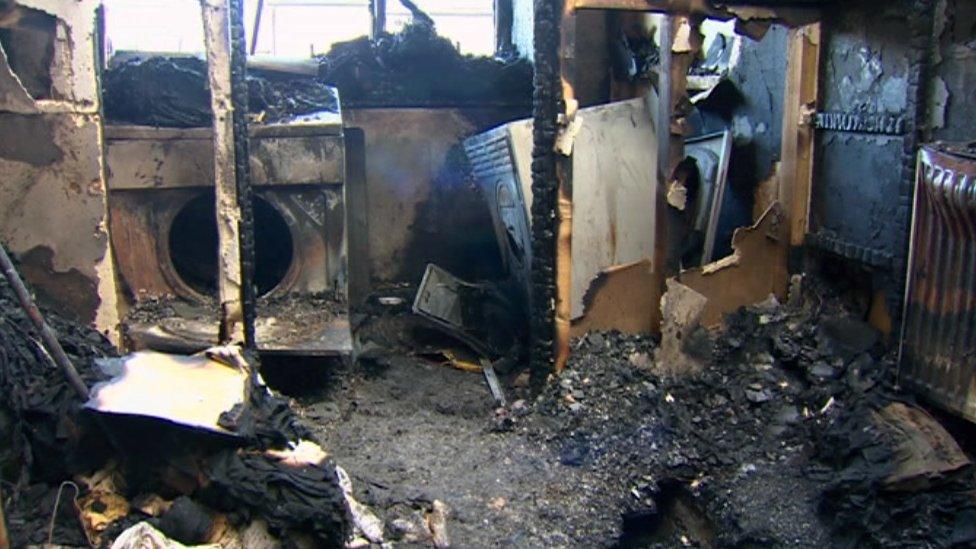Llanrwst fatal fire: Spontaneous combustion dryer claim
- Published

Doug McTavish and Bernard Hender died in the fire at the flat in Llanrwst
A fatal fire which killed two men was caused by "spontaneous combustion" inside a tumble dryer, an inquest has been told.
Bernard Hender, 19, and Doug McTavish, 39, died in the blaze in Llanrwst, Conwy county, in October 2014.
An ex-head of product safety for the US firm Whirlpool said eye-witness evidence suggested material caught fire inside the drum of the machine.
But the cause of the blaze has divided experts at the Abergele hearing.
Giving more evidence on the third day of the hearing, Larry Latack said it was notable that the sole survivor of the blaze had seen flames coming from the drum of the Hotpoint model of dryer.
"It's very significant. Spontaneous combustion - you expect it to come from the drum," said Mr Latack, who until recently had been the head of global product safety for Whirlpool.
An expert giving evidence on Thursday had said there was "no compelling evidence" the fire started in the tumble dryer, but that possibility could not be ruled out.

In February this year, Whirlpool issued notices telling customers to unplug Hotpoint, Creda and Indesit models manufactured between 2004 and 2015 after a potential fire risk was identified.
But Mr Latack had told the inquest the Llanrwst fire had not triggered a "substantial hazard" incident within the company.
He did confirm that between 2009 and the fatal fire in 2014, there had been 28 reports of fires in which the same type of door switch in the dyer was implicated or had not been ruled out.
"Whirlpool is a very diligent company. We take these incidents seriously," he insisted.
Laundry 'damp'
However, his theory of spontaneous combustion has been dismissed by an independent expert working for insurers of the flat where the fire occurred, above a funeral directors' office in the town.
Dr Paul Jowett said at the time of the fire, it was "more likely than not that the laundry was damp".
He said a fault with the door switch assembly coming into contact with lint in the dryer was the most likely cause of the blaze.
Dr Jowett said the fire was consistent with Mr McTavish opening the door mid-cycle and not switching the dryer's timer off.
He told the hearing that it meant an electric current would still be flowing through the door switch, and a spark could have then ignited lint.
Referring to previous cases where Whirlpool-made dryers have had similar component failures, he replied: "That's semantics - they categorise them as component failures - I'd call them fires."
The inquiry adjourned on Friday and will resume at a later date for further evidence to be heard.
- Published20 April 2017

- Published19 April 2017
